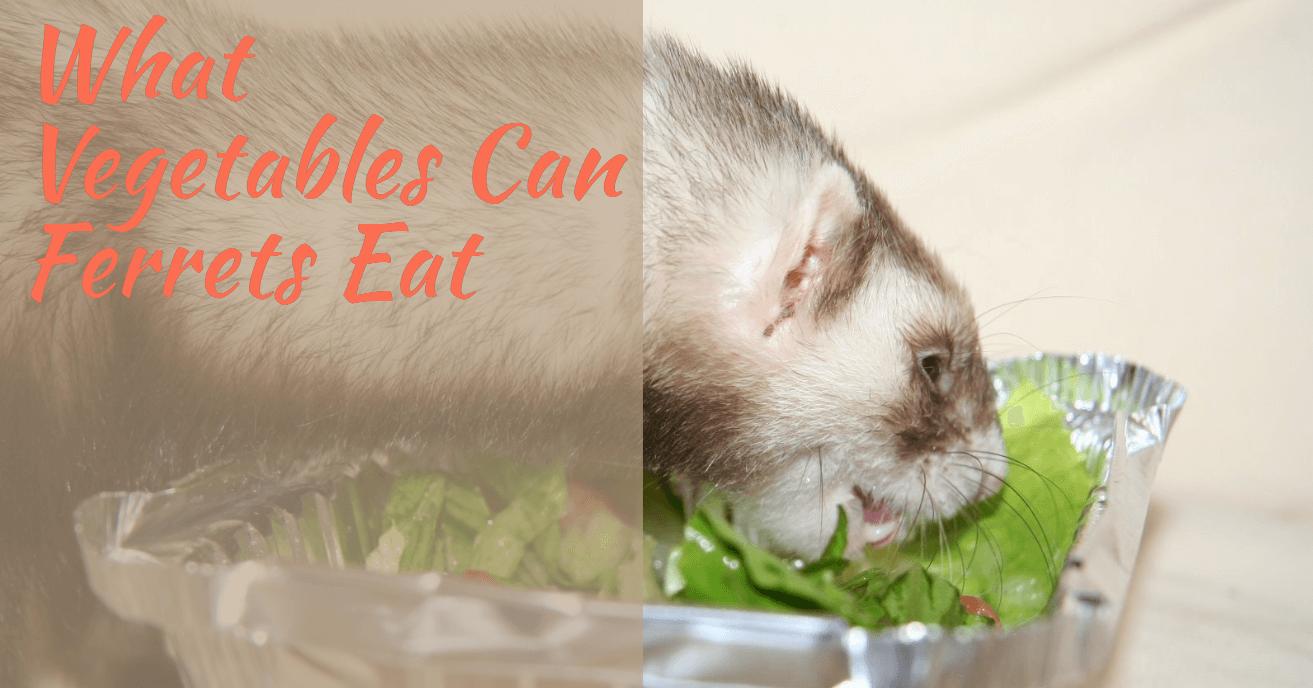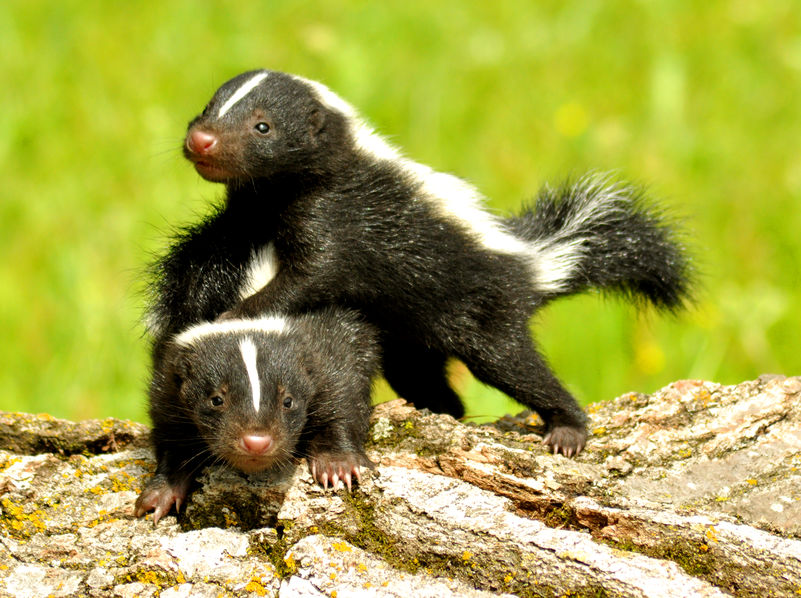
Skunks are small mammals known for their distinct black and white fur and their ability to spray a strong-smelling odor when threatened. Here’s everything you need to know about skunks, including their diet, lifespan, and origin.
Diet: Skunks are omnivorous animals, meaning they eat both plant and animal matter. Their diet consists of a variety of foods, including insects, small rodents, birds, eggs, fruits, berries, nuts, and even carrion. They are opportunistic feeders and can adapt their diet based on what is available in their habitat.
Skunks are beneficial to ecosystems as they help control insect populations by feeding on pests like grasshoppers, beetles, and grubs. However, they may also raid poultry or garden areas in search of food.
Lifespan: On average, skunks have a lifespan of around 2 to 4 years in the wild. However, some individuals have been known to live up to 7 or 8 years. In captivity, skunks can live longer, with some reaching up to 10 years or more, given proper care and a suitable environment.
Origin: Skunks are native to North and South America. They are most commonly found in the United States and Canada, but they also inhabit regions of Central America and northern parts of South America. Different species of skunks have adapted to various habitats, including forests, grasslands, deserts, and urban areas.
Skunks are known for their ability to spray a foul-smelling odor as a defense mechanism when they feel threatened. This spray is produced by specialized scent glands located near the base of their tail. It acts as a powerful deterrent to potential predators, causing temporary discomfort and discouraging further attacks.
Skunks have a unique mating system, where males compete for females during the breeding season. After a gestation period of around 7 to 10 weeks, female skunks give birth to a litter of typically 4 to 7 kits. The kits are born blind and rely on their mother for care and nourishment until they are old enough to venture out on their own.
Supplementing with Vegetables: Nutritional Benefits
While skunks are primarily carnivorous, supplementing their diet with certain vegetables can offer valuable nutritional benefits. Although the majority of their diet should consist of animal-based protein sources, incorporating small amounts of suitable vegetables can provide additional nutrients and enrichment to their meals.
Vegetables are a rich source of vitamins, minerals, and dietary fiber, which can contribute to overall health and well-being. Including vegetables in a skunk’s diet can help ensure a more balanced nutrient profile. Some suitable options include leafy greens like kale or spinach, carrots, sweet potatoes, peas, and bell peppers.
Leafy greens provide essential vitamins such as vitamin A, C, and K, as well as minerals like calcium and potassium. Carrots are packed with beta-carotene, which supports eye health and immune function. Sweet potatoes offer a good source of dietary fiber and contain beneficial antioxidants. Peas provide protein and fiber, while bell peppers supply vitamin C and antioxidants.
When offering vegetables, it’s important to chop or puree them into small, manageable pieces to aid digestion. It’s also crucial to introduce new vegetables gradually to monitor the skunk’s tolerance and ensure they do not cause any digestive upset.
Remember that vegetables should only make up a small portion of a skunk’s overall diet. The majority of their nutrition should come from high-quality protein sources such as commercial skunk food or raw meat diets. Consult with a veterinarian who is knowledgeable about skunks to ensure that the supplemental vegetables you offer are appropriate and provide the necessary nutritional benefits.
By incorporating suitable vegetables into a skunk’s diet, you can provide additional nutrients and variety while still prioritizing their carnivorous nature. Always strive for a balanced diet that meets the specific needs of your skunk to promote optimal health and well-being.
Ferret-Safe Vegetables: The Green Choices
When it comes to supplementing a ferret’s diet with vegetables, it’s essential to choose safe options that are suitable for their digestive system. While ferrets are obligate carnivores, meaning their primary diet should consist of meat, incorporating small amounts of certain vegetables can provide variety and additional nutrients. Here are some ferret-safe vegetables that you can offer as part of their diet:
| Vegetable | Nutritional Benefits |
|---|---|
| Bell Peppers | High in vitamin C and antioxidants |
| Pumpkin | Good source of fiber and aids digestion |
| Squash | Provides essential nutrients and adds variety |
| Green Beans | Contains fiber and promotes digestive health |
| Cucumber | Hydrating and offers a refreshing snack |
When offering vegetables to ferrets, it’s important to introduce them gradually and monitor their response. Chop the vegetables into small, bite-sized pieces to prevent choking hazards. Keep in mind that vegetables should only comprise a small portion of a ferret’s overall diet, typically no more than 5-10%.
While these vegetables are generally safe for ferrets, individual sensitivities may vary. It’s always a good idea to consult with a veterinarian experienced in ferret care to ensure the vegetables you choose are suitable for your pet.
Remember to prioritize the meat-based portion of your ferret’s diet and provide high-quality commercial ferret food or a balanced raw meat diet as the primary source of nutrition. Vegetables should be offered as occasional treats or meal supplements to add variety and enrichment to their diet.
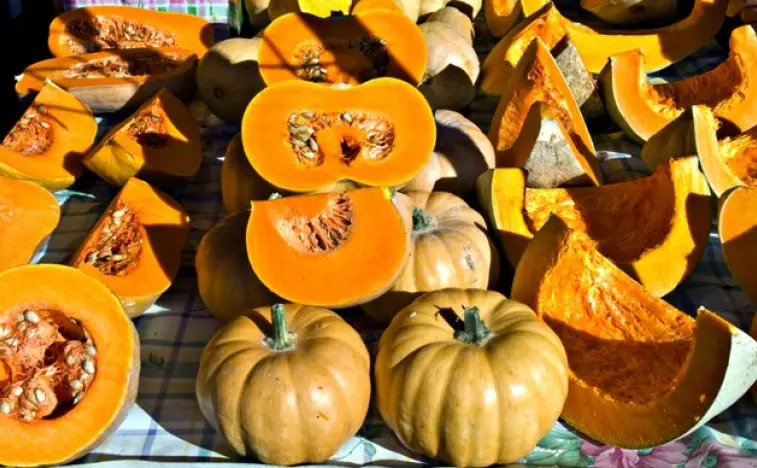
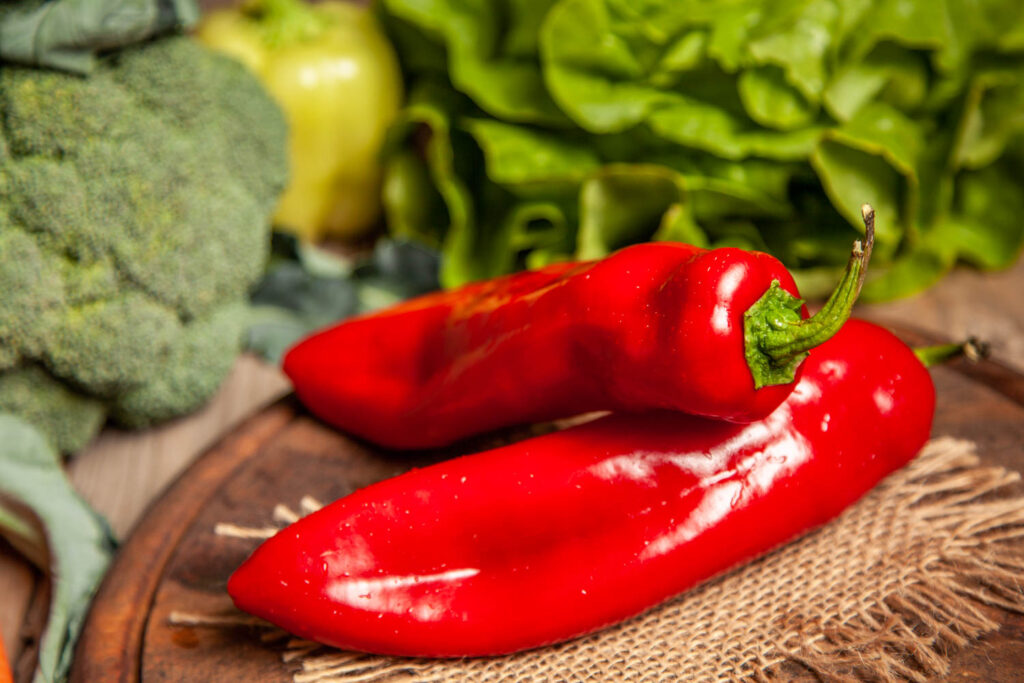
Preparing Vegetables for Ferrets: Safe Practices
When preparing vegetables for your ferret, it’s important to follow safe practices to ensure their health and well-being. Here are some guidelines to keep in mind:
Wash thoroughly: Before serving any vegetables to your ferret, make sure to wash them thoroughly. This helps remove any pesticides, dirt, or bacteria that may be present on the surface.
Chop into small pieces: Ferrets have small mouths and digestive systems, so it’s important to chop the vegetables into small, bite-sized pieces. This not only makes it easier for them to eat but also reduces the risk of choking.
Cook or serve raw: Some vegetables can be served raw, while others may require cooking to make them more digestible. For example, root vegetables like carrots can be served raw, but others like sweet potatoes or squash may need to be cooked or steamed before feeding.
Avoid seasoning or additives: When preparing vegetables for your ferret, avoid adding any seasonings, spices, or additives. Ferrets have sensitive digestive systems, and these additions can be harmful to their health.
Here’s an example table outlining the safe preparation of vegetables for ferrets:
| Vegetable | Preparation |
|---|---|
| Bell Peppers | Wash, remove seeds, chop into small pieces |
| Pumpkin | Cook or serve raw, remove seeds, chop into small pieces |
| Squash | Cook or serve raw, remove seeds, chop into small pieces |
| Green Beans | Wash, trim ends, chop into small pieces |
| Cucumber | Wash, peel if desired, slice into small pieces |
By following these safe practices, you can ensure that the vegetables you offer to your ferret are free from contaminants and prepared in a way that promotes their health and safety. Always monitor your ferret’s response to new foods and consult with a veterinarian if you have any concerns about their diet or specific vegetable choices.
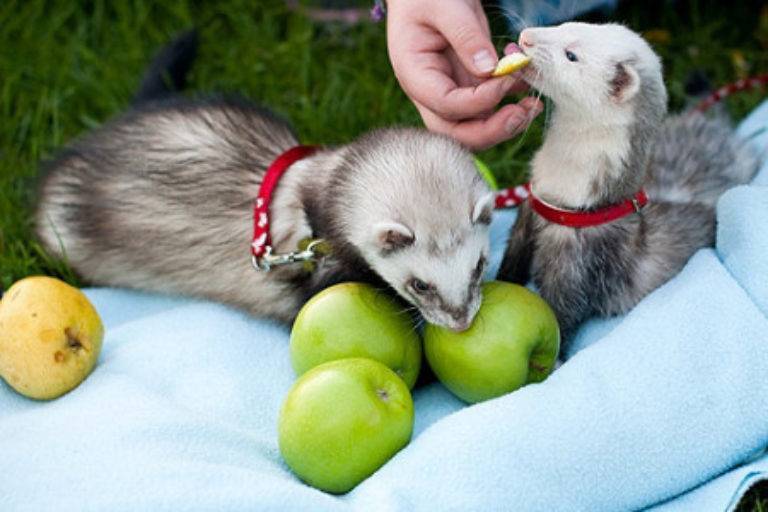
Moderation and Variety: Key Considerations
When supplementing your ferret’s diet with vegetables, two key considerations are moderation and variety. While vegetables can provide nutritional benefits and enrichment, it’s important to offer them in moderation and ensure a diverse range of options. Here’s why moderation and variety are essential:
Moderation: Vegetables should only make up a small portion of a ferret’s overall diet, typically around 5-10%. Ferrets are obligate carnivores, and their digestive systems are designed to primarily process meat-based foods. Too many vegetables can upset their delicate digestive balance and potentially lead to gastrointestinal issues. By offering vegetables in moderation, you can avoid nutritional imbalances and ensure their dietary needs are met.
Variety: Just like humans, ferrets can benefit from a varied diet. Offering a variety of vegetables helps ensure they receive a wide range of nutrients. Different vegetables contain different vitamins, minerals, and antioxidants, so by rotating the types of vegetables you offer, you can provide a more well-rounded nutritional profile. Additionally, variety adds excitement and enrichment to your ferret’s meals, preventing them from becoming bored with their food.
When introducing new vegetables or rotating options, observe your ferret’s response. Some vegetables may be better tolerated than others, so it’s important to monitor for any signs of digestive upset or allergic reactions. If you notice any adverse reactions, discontinue offering that particular vegetable and consult with a veterinarian.
In conclusion, moderation and variety are key considerations when supplementing your ferret’s diet with vegetables. By offering vegetables in small amounts and ensuring a diverse selection, you can provide additional nutrients and enrichment while maintaining a balanced diet. Remember to prioritize the meat-based portion of their diet and consult with a veterinarian for specific guidance on your ferret’s nutritional needs.
Frequently Asked Questions
Q1: Can ferrets eat leafy greens like lettuce or spinach? A1: Leafy greens like lettuce or spinach should be avoided as they can cause digestive upset in ferrets. Stick to the safe vegetables mentioned in this guide.
Q2: Is it necessary to feed vegetables to ferrets? A2: While vegetables are not a nutritional requirement for ferrets, small amounts of safe options can provide variety and enrichment in their diet.
Q3: Can ferrets eat fruits as well? A3: Ferrets should only consume fruits in very limited quantities due to their high sugar content. Stick to vegetables as the primary source of non-meat foods.
Q4: How often should I offer vegetables to my ferret? A4: Vegetables should only comprise a small portion (5-10%) of a ferret’s overall diet. Offer them as occasional treats or meal supplements.
Q5: Can I feed my ferret raw vegetables? A5: Raw vegetables should be given in small amounts and finely chopped to aid digestion. However, cooking vegetables can help break down tough fibers and improve digestibility.
Q6: What if my ferret shows signs of digestive upset after eating vegetables? A6: If your ferret experiences digestive issues, discontinue offering vegetables and consult a veterinarian for guidance on your pet’s specific dietary needs.
